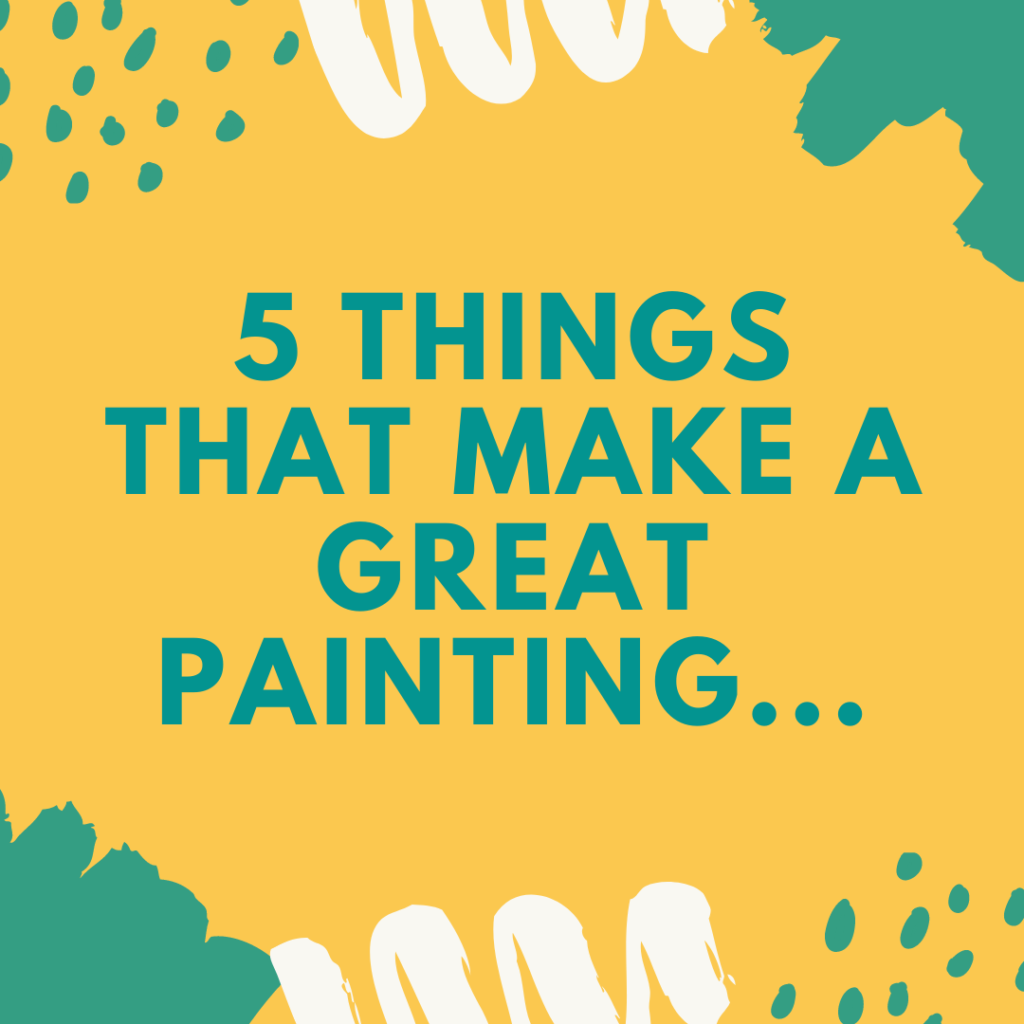Music is an art form, right? We all agree on that. I’ve found that many things musicians apply to their craft have real value in the realm of painting. What makes a good song? Surprisingly, there are similarities between a good song and a good painting. So I thought I’d share some musical tips that we can learn from as visual artists.
You may not know this about me, but I was a musician before I was an artist! Playing the piano and singing were my instruments. I helped to write, arrange, edit and record an album of music with the band I led for 12 years. I also raised 4 musically talented kids.

Through my experiences in the musical world, I’ve gained a very practical appreciation of the principles that govern musical compositions and what makes for a great song. There are overarching principles that apply to both music and art. I’ve never heard another art teacher discuss this and I think that’s a shame. So today we are gonna change that!
What I found by having a foot in both worlds can be summed up this way…
What makes a good song also makes a good painting!
Here are 5 tips I’ve learned in the musical realm that will help you compose better paintings.

#1
If you repeat it, change it!
Repetition with variation is important. While a theme can reoccur, each repetition should ideally be embellished differently. Think about the chorus in a song. It gets repeated and it’s often the only lyrics you know to many of the songs you love. It’s repeated and you love it…but look closer.
I’ll bet that vocal artist sings it differently every time. Or if they don’t, I’ll bet the producer of the song adds harmony and arranges the repetition with some variation so that is slightly different each time.
Repetition provides cohesion and familiarity while variation offers more entertainment. As artists, we are visual entertainers so keep this in mind! I promise it will lead to a good painting.
How could you apply that to your painting? Any time you find yourself repeating something over and over, look for ways to make it different.
Windows, trees, fenceposts, flowers, strands of hair…be very careful to not make the same mark each time…change it up!
If it’s a line, let it be lost and found, thick and thin, light and then dark, positive and then negative. The choices are there, and it’s up to you as the artist to bring that kind of creative thinking to your piece.
#2
Practice! Painting good paintings takes practice, practice, practice!
“If I don’t practice one day, I know it; two days, the critics know it; three days, the public knows it.”
Jascha Heifetz
Here is what I know: You can expect to grow if you continue in your craft. Hours with a brush in your hand are what allows you to grow in skill. If you love to paint and want to paint well, there is no substitute for keeping your brushes wet and painting any chance you can get.
My mom told me something long ago…
” You’re either growing or you’re dying.”
Which camp are you in?
#3
There has to be DYNAMIC change for a painting to be good!
Otherwise known as contrast, a dynamic change creates entertaining drama! In music, if the same note was played over and over again on a piano, at the same volume, with the same rhythm, it would not take long till you found it dull. If you were forced to it endure it even longer, it would quickly become annoying!😫
Musicians have quiet starts to songs, with sparse instrumentation, and as the song goes on, it grows. Often the volume changes and the harmonies build and the bridge creates a climax that is really big, perhaps quieting down as the song comes to a close. THAT! is DYNAMIC change.
As an artist you could think about fence posts…if you see a fence in a painting and each post is the same color, the same height and width, without any variation in edge or value, it will be dull at best and become visually annoying very quickly. That’s certainly not the goal!
Be anything but dull! Be wrong, be bold, be controversial, but don’t be dull.
#4
Give the composition a hook
Repetition and familiarity hold a song together. But generally there’s a moment in a song, a climactic moment that will grab the listener. A hard driving song may have a pause, or a quiet song may have a loud peak that makes you take note.
As visual artists, we want to grab our viewers in a similar way. What is the main idea of your painting? Does something about that focal area have punch? Where’s the wow factor? Paint with intention of leading the viewer to the area you want to be most important. But remember to do this…
If you lead a viewer somewhere in your painting, make sure you entertain them once they get there!
#5
Passion and Persistence can trump talent!
I have often been disappointed to see a musician or painter with great talent choose to hang up their instrument or paint brush before they reach their potential. They lack something. Either the love and passion for the craft, or the persistence required to become excellent.
On the other hand, I’ve been amazed to see where passion and persistence can lead a person…even a person without a lot of inherent talent! When you love a thing and want it bad enough, you’ll likely have the drive. It takes discipline and consistency to get better.
Good paintings will result from passionate and persistent painters
As painters I promise you will improve if you keep painting and keep learning. It’s that persistence that will pay off in the end.
I hope you’ll keep these musical methods in mind and…
Keep Painting Friends!


Recent Comments